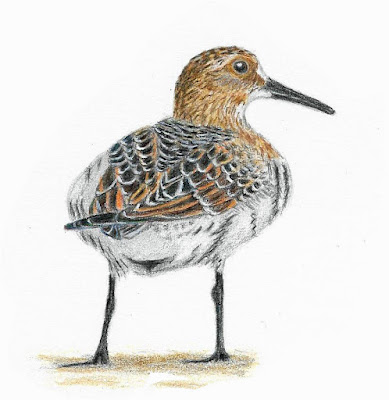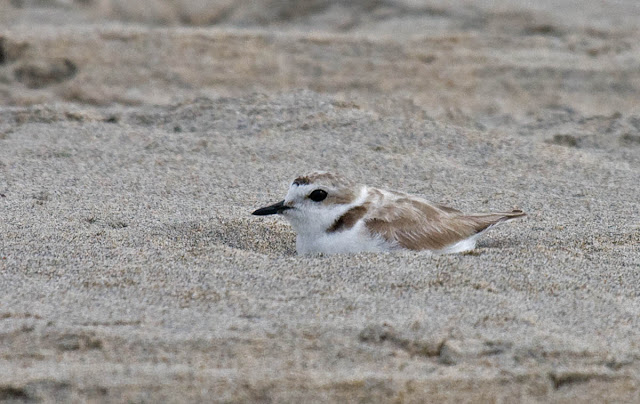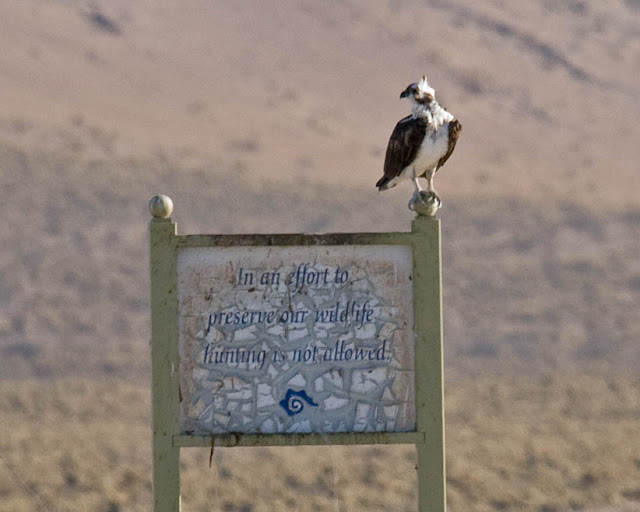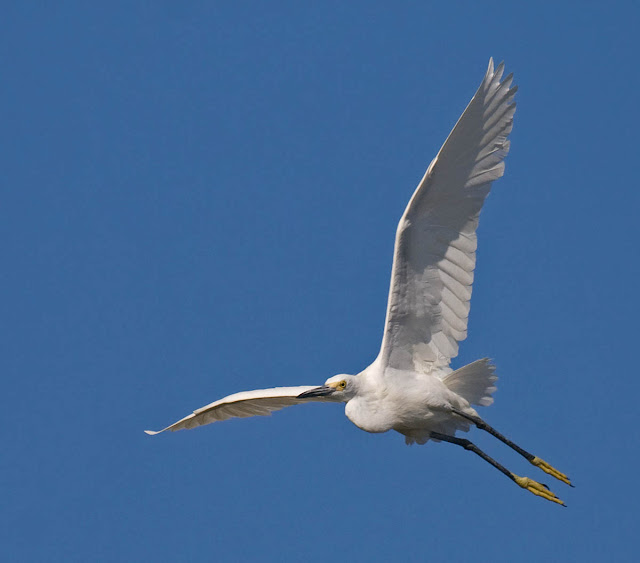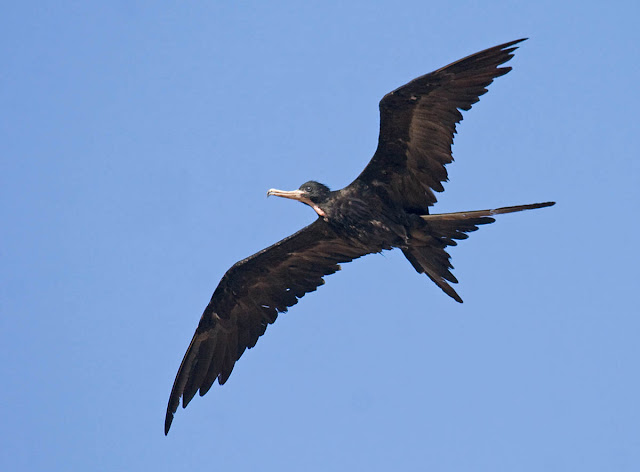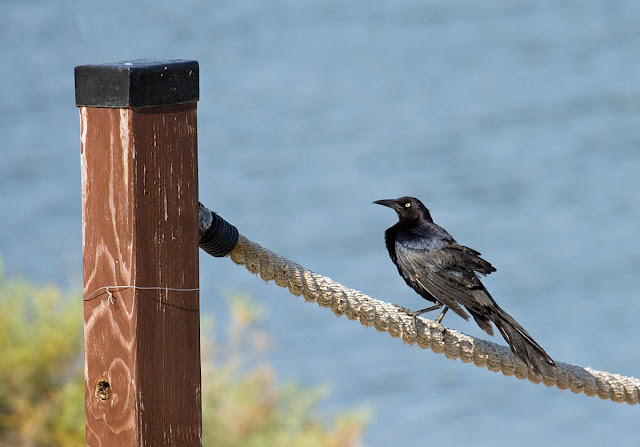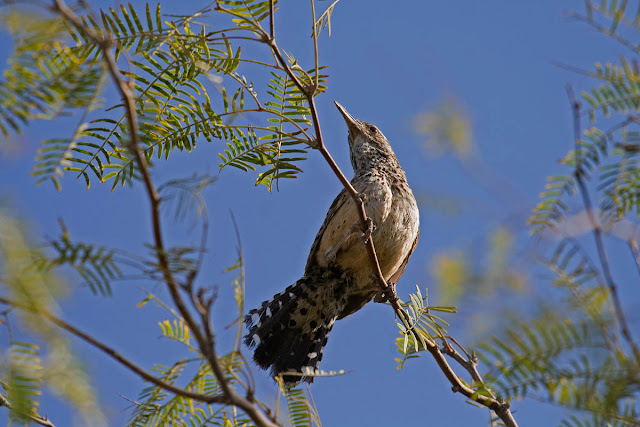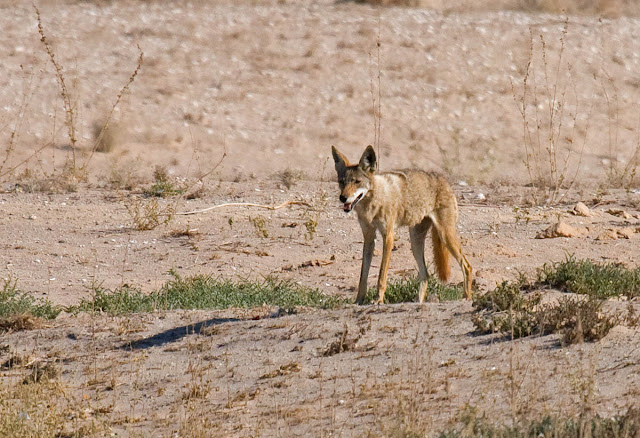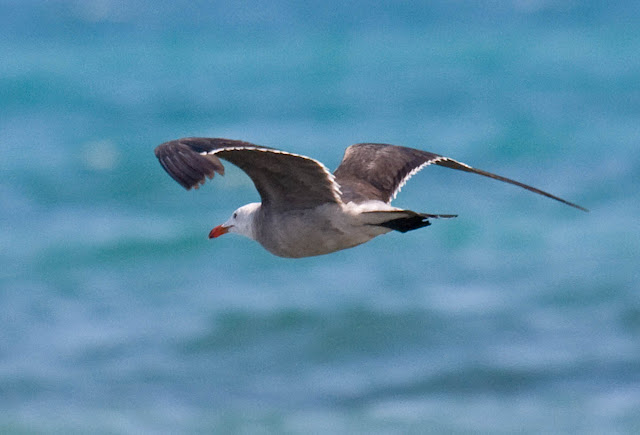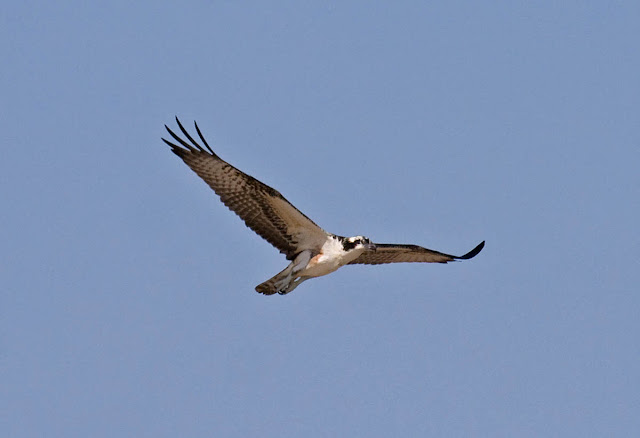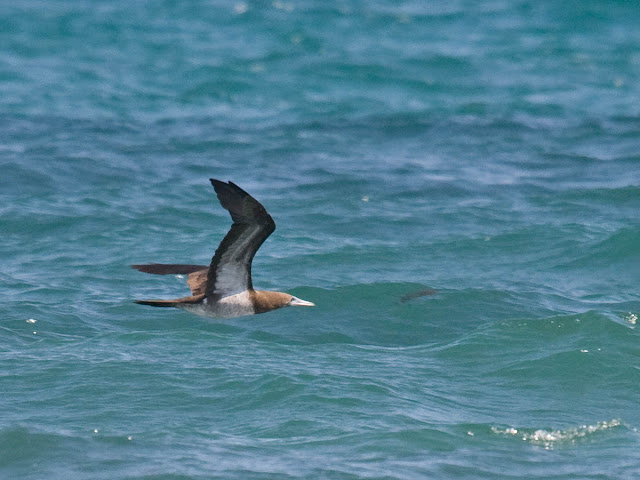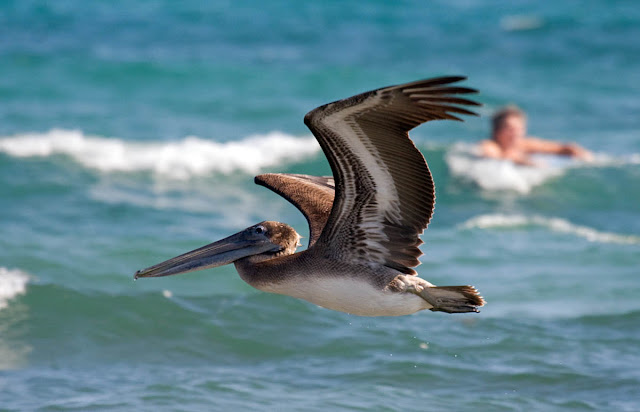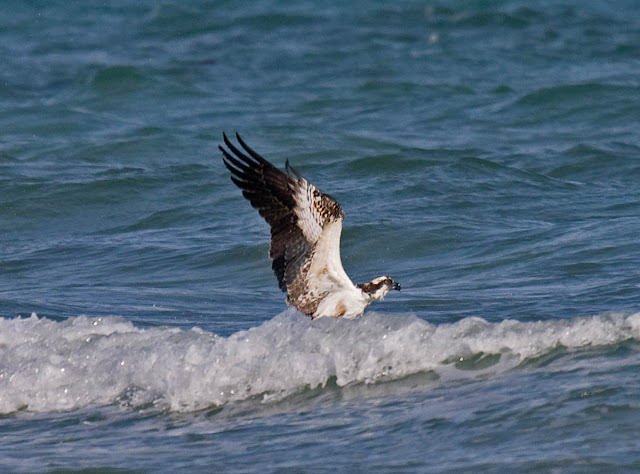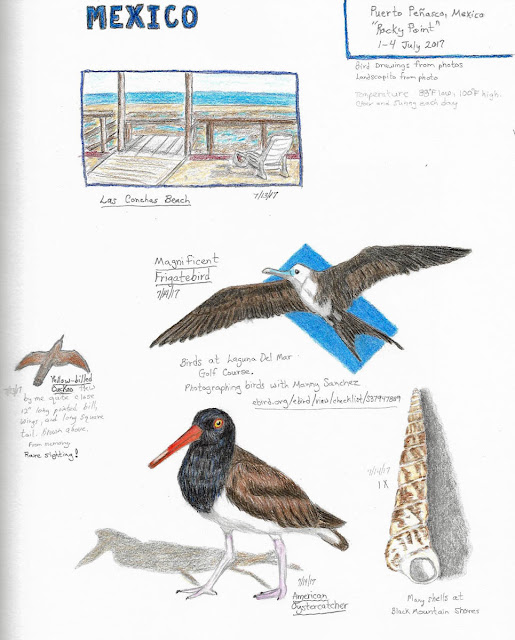I had the opportunity to chase it before work on the next day. I arrived just before 7:00 am, birded around the exact location and then birded farther away, up to a couple blocks into the nearby neighborhood. At 8:00 am I received word that the bird had just showed up sunning itself in the exact place everyone had been looking for it during the previous hour. I was able to watch the bird for another half hour before needing to return home to get ready for work.
 |
| Groove-billed Ani. Encinitas, California. November 20, 2017. Greg Gillson. |
There are three ani species found primarily in tropical America. Two, Smooth-billed Ani and Groove-billed Ani, reach the United States. The photo above shows the grooves in the unusual deeply keeled bill.
Anis, like roadrunners, are in the cuckoo family. The loose plumage and floppy tail is typical. These birds fly weakly and wobbly, and often run and feed on the ground. Indeed, some photographers got great pictures of it eating a very large grasshopper on the ground. During the time I observed this bird, however, it was content to sit still, fluff up, and soak up the warm sun while looking around at all the birders about 25-30 feet away.
Groove-billed Anis (Wikipedia page here) are found from southern Texas and southern Sonora southward to Ecuador and Peru. During winter the birds in Texas and northern Mexico retreat southward. While rare, they are known to wander widely in fall, from Florida to California, occasionally very far north of the normal range (Minnesota, northern Ontario, New Jersey).
Of course, this close to Tijuana (where all kinds of birds are sold as "pets"), one must always ask about the origin of this bird.
Fortunately, while a first record for San Diego County, it fits nicely in the pattern of occurrence of other California and Southwest records from early September through December, with a peak in October.
There are 12 accepted previous California sightings reviewed by the California Bird Records Committee. Eight (nine?) of the sightings are for fall (13 September-16 November). In addition, at least twice California birds have stayed through the winter. The most recent three previous California records seem to be 2015, 1998, and 1995. So this is only the second record in 20 years.
And the bird is still being seen, so maybe it will spend the winter!










